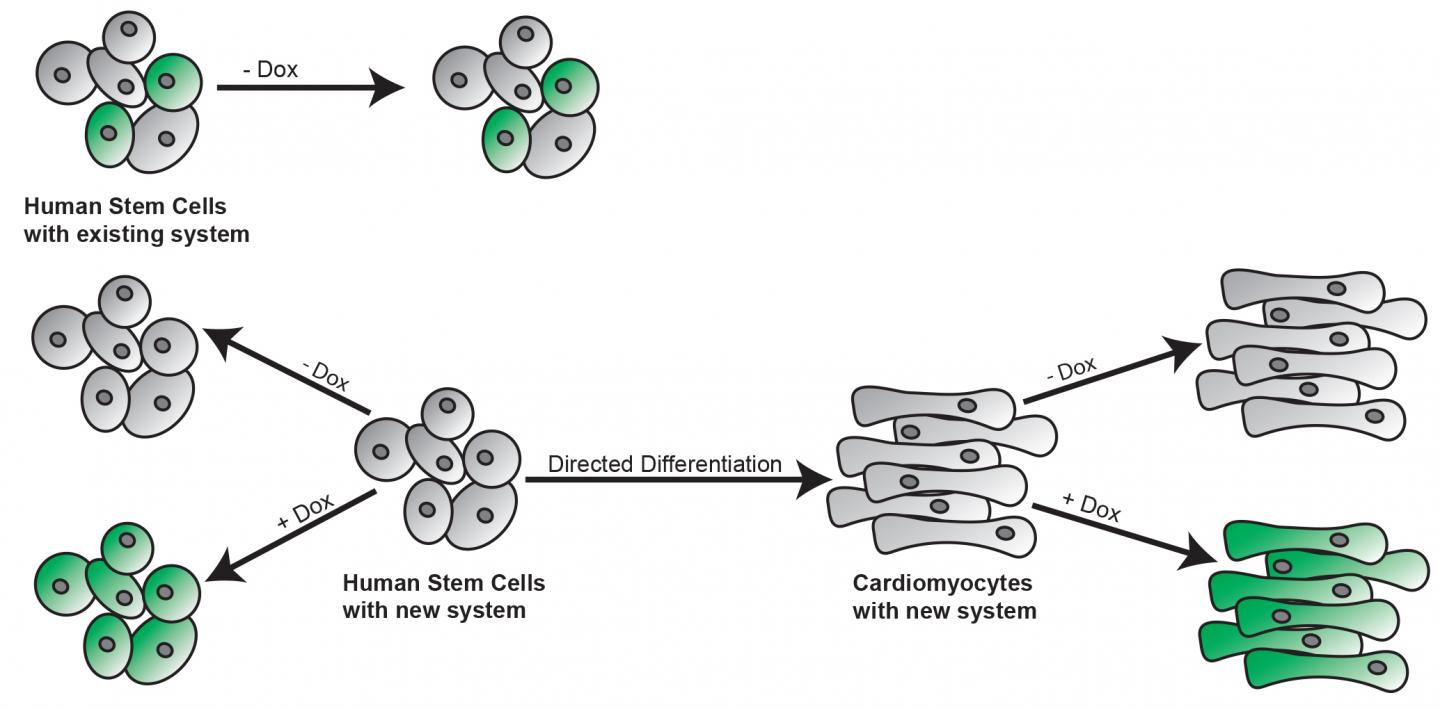
Credit: Laura Randolph, Penn State
Whether using embryonic or adult stem cells, coercing these master cells to convert to the desired target cell and reproduce flawlessly is difficult. Now an international team of researchers has a two-part system that can convert the cells to the targets and then remove the remnants of that conversion, leaving only the desired DNA behind to duplicate.
"One difficulty with human pluripotent stem cells is that you can't use them directly," said Xiaojun Lian, assistant professor of biomechanical engineering, biology and a member of the Huck Institutes of the Life Sciences, Penn State. "They need to be functional cell types. If you have a heart attack you want cells that will repair the heart wall."
Normally, pluripotent stem cells induced from both adult and embryonic cells receive a chemical signal to change from a stem cell to a functional cell. Pluripotent stem cells can change to any cell in the human body. However, this natural cell change is part of a complex series of triggers controlled by DNA. Researchers have in the past inserted DNA into the pluripotent cells to convert them, but remnants of the inserted DNA remain.
In this current work, published in a recent issue of Scientific Reports, the researchers are not incorporating a piece of DNA that will tell the cells to convert, but DNA that will make the cell glow green when illuminated by a blue light. This marker allows the researchers to see that the DNA plasmid is incorporated into the cell, and that it is completely gone upon removal. A plasmid is a circular piece of DNA that contains functional DNA fragments that control gene expression in cells.
"We wanted to explore the limits for turning the conversion on and off and to have the ability to control the level of expression and removal of DNA after conversion," said Lauren N. Randolph, doctoral student in bioengineering, Penn State.
Previous approaches incorporated the appropriate DNA to switch on the conversions, but did not completely remove all the DNA inserted.
The researchers are using a Tet-On 3G inducible PiggyBac system that is a plasmid they named XLone to achieve insertion, activation and removal. The PiggyBac portion of the system includes the DNA to insert that DNA into the cell's DNA. The Tet-On 3G portion contains the necessary signaling information. This system also makes the cells more sensitive to doxycycline, which is the drug used to initiate the conversion.
"We are using abundant multiple copies of the plasmid to increase the likelihood that it gets in and does what it is supposed to do and actually follows through reproduction of the cells," said Lian.
If only one or a few plasmids are inserted into the cell, the new DNA could just be silenced. Insertion of multiple plasmids assures that at least one will function.
"The first advantage with our system is that it does not have any leakage expression," said Randolph. "If we don't induce the system with doxycycline, we get nothing."
The second advantage is that once the cells are reproducing as heart cells or nerve cells, the plasmid can be removed and the cells continue to reproduce without any remnant of the plasmid system.
While the researchers are currently aiming to understand and study gene function and directed cell differentiation in human stem cells, eventually they would like to be able to create cell-based therapies for a range of degenerative diseases.
###
Also working on this project were Xioping Bao, postdoctoral fellow at University of California, Berkeley and Chikai Zhou, doctoral student at Karolinska Institute, Sweden.
The Penn State Bioengineering Department, Biology Department and Huck Institutes of the Life Sciences supported this work.
Media Contact
A'ndrea Elyse Messer
[email protected]
814-865-9481
@penn_state
http://live.psu.edu
############
Story Source: Materials provided by Scienmag





